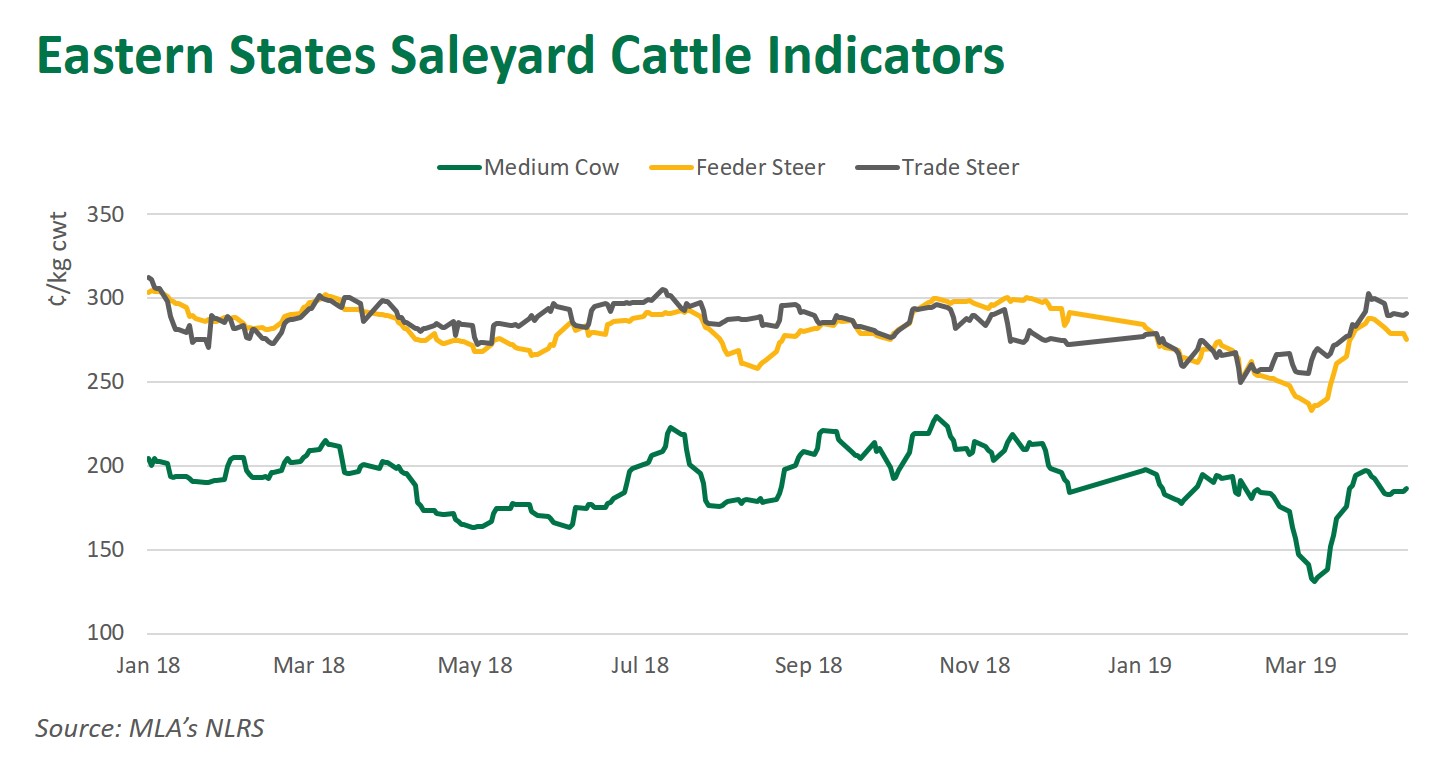Subscribe to The Weekly e-newsletter
For in-depth red meat market news, information and analysis.
Yardings spike hits prices
18 April 2019
There was a significant jump in cattle yardings last week, resulting in downward pressure on prices, with the Eastern Young Cattle Indicator (EYCI) sharply back on the week prior, to 453.25¢/kg carcase weight (cwt).
Yardings
For the week ending 12 April, cattle yardings totalled 82,828 head, an increase of 27,700 head week-on-week and the biggest yarding seen since the corresponding week last year. Queensland saw the biggest lift in numbers, more than doubling the throughput from the week before to 27,505 head. In NSW, numbers totalled 35,435 head, up 38% on the previous week but back 7% from the same week in 2018. Victorian yardings increased 28% to 14,901 head from the week before, and up 8% year-on-year.
The biggest increase in yardings were seen at:
- Roma Store – up 8,124 to 11,614 head
- Dalby – up 1,700 to 7,615 head
- Emerald – up 1,400 to 3,326 head
- Tamworth – up 1,400 to 3,733 head
- Gunnedah – up 1,300 to 3,460 head
Prices
Cattle prices felt the impact of an increase in yardings. On Tuesday, the EYCI was 453.25¢/kg cwt, down 39¢ week-on-week and 11% below year-ago prices. The number of EYCI eligible cattle has increased 44% since April 1, with market reports suggesting an increase in the quality of cattle processed through saleyards. There may be an element of producers looking to capitalise on current prices given the unfavorable weather outlook.

The medium cow indicator held firm in the face of increased supply, improving 4¢ week-on-week to 186.50¢/kg cwt on Tuesday. This comes on the back of a 66¢ jump in the indicator to 197¢/kg cwt in the weeks following widespread rainfall during March. Overseas grinding beef demand has also offered an element of support to cow prices.
Trade steers followed suit and improved 1¢ from last week to 290.75¢/kg cwt, with prices stabilising following the 48¢ rise seen from mid-March to April 2, where the indicator peaked at 302.80¢/kg cwt.
Feeder steers felt the pressure of an increase in supply, with the indicator easing 6¢ week-on-week to 275.25¢/kg cwt. However, the indicator remains elevated year-on-year as a result of the price lift since mid-March. Competition between feedlot buyers is still evident, as restocker interest will remain subdued until conditions significantly improve.


